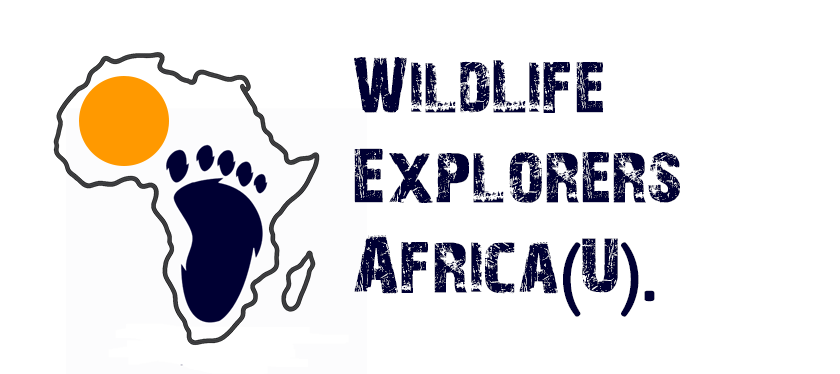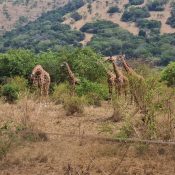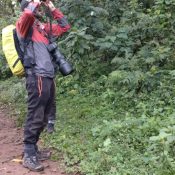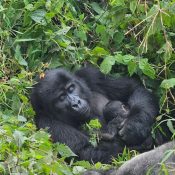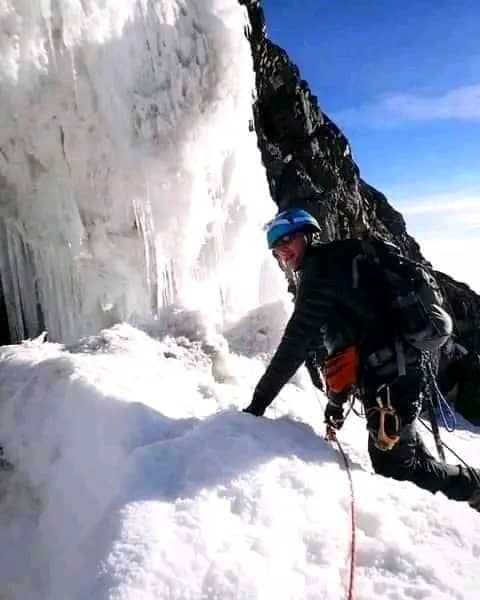
Conquering the magical Rwenzori- Africa’s Mountain Of the Moon
The Magical Adventure- An Experience Like No Other
Long before satellite imagery and modern cartography, ancient scholars gazed southward from the Mediterranean, imagining a mysterious range deep in the heart of Africa.
These were the Mountains of the Moon—a name first whispered by early Egyptian scientists and later immortalized by the Greek geographer Ptolemy in the 2nd century CE. He described the Lunae Montes (Latin for “Mountains of the Moon”) as the source of the mighty Nile, fed by snowmelt from towering peaks lost in mist and myth
Even earlier, around 1400 years ago, the dramatist Aeschylus speculated that the Nile’s waters were born from distant snows—an astonishing insight given the equatorial location of the Rwenzori. These snow-capped summits, shimmering like moonlight, seemed otherworldly to ancient eyes
For centuries, the quest to uncover the Nile’s origin drew explorers from Egypt, Greece, and later Europe into the African interior. They followed the river’s winding path, driven by curiosity and legend, until they encountered the Rwenzori-a range of glaciated peaks straddling the border of modern-day Uganda and the Democratic Republic of Congo near Kasese, Bundibugyo, and Kabarole districts. Rising to over 5,100 meters, these mountains remain one of the few equatorial ranges with permanent snow—a surreal sight that continues to inspire awe
There are many reasons Why Climbing the Rwenzori Is Still a Serious Challenge
7-Day Rwenzori Mountains Trekking-breathtaking trek
The Mountain of the moon’s weather is Unpredictable- The Rwenzori range is notorious for sudden changes in weather. Torrential rains, thick fog, and freezing temperatures can descend without warning, making navigation and visibility difficult.
The Boggy Terrain-the lower zones are covered in deep, spongy bogs and dense vegetation. Even with boardwalks and improved trails, trekkers often struggle through mud and waterlogged paths.
Hiking this mountain is associated with high Altitude Risks-With peaks reaching over 5,100 meters (like Margherita Peak), climbers face altitude sickness, fatigue, and reduced oxygen levels. Acclimatization is essential, and the ascent must be gradual.
Glacial and Rock Hazards– The upper zones feature glaciers, steep rock faces, and slippery moss-covered boulders. Ice axes, crampons, and ropes are often required, especially for technical summits like Mount Stanley.
The mountain of the moon lies in a relatively isolated part of western Uganda. Rescue operations are difficult, and climbers must be self-sufficient and well-prepared. The combination of the above requires seasoned hikers to do some fitness training before they opt to conquer the mountain of the moon-the most challenging mountain with breathtaking scenery
For nearly three hundred days a year, the towering peaks of the Rwenzori Mountains vanish from view, cloaked in thick clouds that drift endlessly across the sky. To those living in the valleys below, the summits seem like a dream — lost in mist, unreachable, and wrapped in mystery.
Yet above the covering of vapor, the mountains rise in silent magnificence. The highest of these — including Margherita Peak — soar to over 16,000 feet (4,843 meters), piercing the heavens with icy defiance. Despite lying just 30 miles (48.5 km) north of the equator, these peaks remain snow-capped year-round, a rare and surreal phenomenon in equatorial Africa.
The Rwenzori’s unique climate and elevation create a world apart– alpine meadows, giant lobelias, and glacial valleys that feel more like the Andes or Himalayas than the heart of Uganda. It’s no wonder ancient explorers believed these were the Mountains of the Moon, the source of the Nile and the cradle of legends
Mount Margherita – At 16,762 feet (5,109 meters), this is the highest point in the Rwenzori and the third-highest peak in Africa. It crowns Mount Stanley, the range’s largest massif. Mount Alexandra – a neighboring summit on Mount Stanley, reaching approximately 16,667 feet (5,083 meters) while Mount Baker – Standing at 15,892 feet (4,843 meters), it’s the third-highest independent peak in the Rwenzori rangehttps://www.rwenzorimarathon.com/
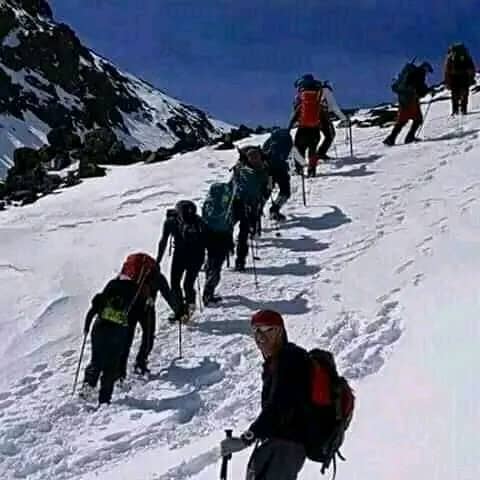
Wildlife Wonders of the Rwenzori Slopes
The slopes of the Rwenzori Mountains are alive with some of the world’s most unusual and fascinating creatures, adapted to the misty forests and alpine zones of this equatorial range. It is not only a geological marvel but also a cradle of biodiversity
The Rock Hyrax which is Often mistaken for a rabbit, this hoofed mammal is surprisingly a close relative of elephants and rhinoceroses. Despite its small size and rodent-like appearance, the rock hyrax shares unique anatomical traits with its mighty cousins — including tusk-like incisors and specialized foot pads for gripping rocky surfaces.
The Giant Earthworms– Slipping through the moist soils of the Rwenzori’s montane forests are earthworms that can grow up to 3 feet (0.93 meters) long. These colossal invertebrates play a vital role in soil health and nutrient cycling, thriving in the rich, organic layers of the mountain’s lower zones
The Rwenzori is also home to elusive Rwenzori otters, Rwenzori three-horned chameleon, forest elephants, and over 177 bird species, including the vibrant Rwenzori turaco, the Rwenzori double-collared sunbird among others. Each elevation zone reveals a new cast of characters, from bamboo forests to afro-alpine meadows.https://www.rwenzorimountainsnationalpark.com/
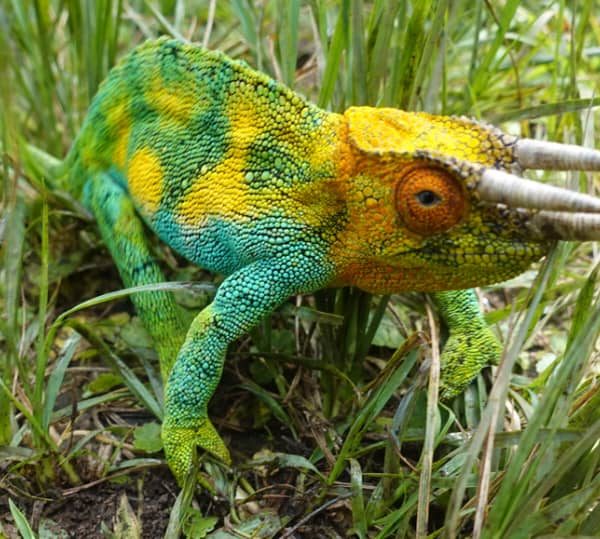
Best Time to Climb the Rwenzori Mountains
Planning a trek into the legendary Mountains of the Moon requires more than just gear and grit — it demands perfect timing. The Rwenzori’s rugged terrain and unpredictable climate make seasonal awareness essential for a safe and rewarding climb.
Obviously, the Dry Seasons is Your window to the Peaks
The Rwenzori Mountains experience two distinct dry seasons, offering the most favorable conditions for trekking and mountaineering:
From December to February-there is Clear skies, minimal rainfall, and comfortable temperatures make this an ideal time to ascend. Trails are less muddy, visibility is excellent, and the snow-capped peaks shine against blue horizons.
June to August-The second dry season brings similarly stable weather. With reduced precipitation and crisp air, this period is perfect for summiting Margherita Peak or exploring the alpine zones.
Why Avoid the Wet Season?
From March to May and September to November, the mountains receive heavy rainfall. Trails become slippery and boggy, cloud cover thickens, and visibility drops — making navigation and photography more difficult.
Formation of the Mountain of the moon
These mountains formed about three million years ago during the late Pliocene era. Unlike volcanic or folded ranges, the Rwenzori were formed by tectonic uplift of ancient crystalline rocks—gneiss, amphibolite, granite, and quartzite. This dramatic uplift split the prehistoric Paleolake Obweruka, giving birth to three of Africa’s Great Lakes: Lake Albert, Lake Edward, and Lake George.
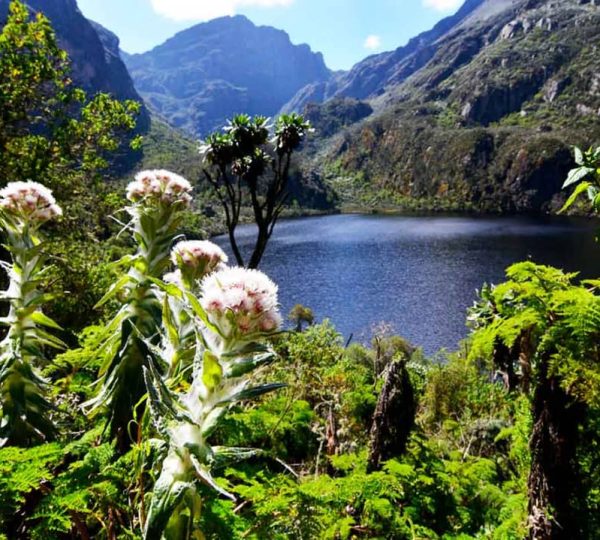
Rwenzori-The Water Towers- a source of Western Uganda
Though often shrouded in mist and mystery, the Rwenzori Mountains play a vital role in sustaining life across the western Rift Valley. Their steep slopes and high precipitation rates feed a network of rivers that feed three of Uganda’s great lakes: George, Edward, and Albert.
Rwenzori has Key River Systems which includes Nyamwamba, Mubuku, and Ruimi Rivers: These fast-flowing torrents descend from the high elevations and empty into Lake George, carving through rocky terrain and montane forests.
The Nyamugasani River- Drains into Lake Edward, supporting aquatic ecosystems and local communities.
And lastly Butawu and Lamya Rivers-join Lake Edward’s outflow — the Semliki River — which winds its way northward to Lake Albert, linking the mountain’s waters to the greater Nile basin.
Above 1,200 meters, these rivers are steep, rocky, and swift. But as they reach the lowland plains and swamps of the Rift Valley floor, they slow and spread, enriching wetlands and supporting biodiversity.
The Rwenzori’s crystalline bedrock is largely impermeable, meaning rainfall doesn’t seep into the ground but instead runs off rapidly into streams and rivers. This results in high runoff efficiency, making the mountains a crucial water source compared to the adjacent lowlands.
Their snow-capped peaks near the equator and glaciated valleys make them a global anomaly—hosting alpine ecosystems in a tropical latitude. The range offers insights into plate tectonics, climate evolution, and biodiversity adaptation across altitudinal zones.
The Central Circuit is not just a hike — it’s a passage through ancient landscapes, ecological wonders, and the legendary Mountains of the Moon.
The Central Circuit Trail is the most iconic route through the Rwenzori Mountains — a 7 to 9-day expedition that immerses seasoned hikers in the heart of this magical range. Winding through lush montane forests, moss-covered valleys, and surreal afro-alpine landscapes, the trail offers a journey unlike any other.
Traverse through Bujuku Valley-a hauntingly beautiful stretch lined with giant lobelias and towering groundsels, framed by dramatic peaks and misty skies.
Encounter Weismann’s Peak-a rewarding ascent that offers panoramic views of the surrounding ranges and valleys.
Finally conquer Margherita Peak-The crown jewel of the trek — standing at 5,109 meters (16,762 feet), it’s the highest point in the Rwenzori and the third-highest peak in Africa. Conquering this glaciated summit is a bucket-list achievement for seasoned mountaineers.
Kilembe Trail- A Shorter Gateway to the Mountains of the Moon
For adventurers seeking a shorter and less strenuous trek, the Kilembe Trail offers a stunning 3–4-day journey through the southern reaches of the Rwenzori Mountains. Starting from the town of Kilembe, this route winds through lush rainforests, bamboo groves, and alpine zones, revealing breathtaking views of glaciers, alpine lakes, and towering peaks.
Mahoma Trail-a Gentle Gateway into the Rwenzori Wilderness
For trekkers seeking a shorter and less strenuous adventure, the Mahoma Trail offers an enchanting route through the lower slopes of the Rwenzori Mountains. This trail is perfect for nature lovers, birdwatchers, and those with limited time who still want to experience the magic of the Mountains of the Moon.
Begin your journey with a briefing from experienced guides at Nyakalengija or Ibanda. Ascend through the lush rainforest along Kyambogho Ridge, where sweeping views of the Mubuku Valley and Kasese town unfold beneath the canopy. The trail winds through pristine vegetation, alive with birdsong and the rustle of monkeys in the trees.
You will have an overnight at Omu’ka Kizza Rest Camp (2,977 m) — a scenic perch offering panoramic vistas of the Rwenzori foothills.
Continue through moss-draped heather forests and bamboo groves, tracing ancient elephant trails. Arrive at Lake Mahoma (3,515 m), a tranquil alpine lake cradled by giant heather trees and misty ridges. The serenity here is unmatched — a perfect spot for reflection and immersion in nature.
Continue through moss-draped heather forests and bamboo groves, tracing ancient elephant trails. Arrive at Lake Mahoma (3,515 m), a tranquil alpine lake cradled by giant heather trees and misty ridges. The serenity here is unmatched — a perfect spot for reflection and immersion in nature.
Its Wildlife Encounters include-Rwenzori turacos, sunbirds, and barbets, Black-and-white colobus monkeys, blue monkeys, and the elusive L’Hoest monkey. Occasional signs of mountain elephants — a humbling reminder of the wild
Retrace your steps through the enchanted forest, descending gently back to Nyakalengija or Ibanda. The return offers fresh perspectives and final glimpses of the Rwenzori’s hidden wonders.
Pass through elephant Trails-Follow the footprints of mountain elephants through bamboo and heather forests — a rare and humbling experience. Mahoma Falls Viewpoint
The trail culminates at the Mahoma Falls viewpoint, offering sweeping views of cascading waterfalls and misty valleys — a perfect spot for reflection and photography.
Essential Gear Checklist for hiking the Mountain of the Moon.
- Strong Hiking Boots: Waterproof, high-ankle boots with good grip are vital for navigating muddy trails, rocky slopes, and alpine zones.
- Layered Clothing: Temperatures vary dramatically with altitude. Pack moisture-wicking base layers, insulating mid-layers, and a waterproof, windproof outer shell.
- Warm Sleeping Bag: Choose a sleeping bag rated for sub-zero temperatures — nights at high camps can be freezing, even near the equator.
- Trekking Poles: Help with balance and reduce joint strain, especially on steep descents and boggy terrain.
- Durable Backpack: A well-fitted pack with rain cover and enough space for gear, snacks, and water is essential.
- Sun Protection: UV rays intensify at altitude. Bring sunscreen (SPF 30+), sunglasses with UV protection, and a wide-brimmed hat.
- Headlamp: Crucial for early starts, cave visits, or navigating camps after dark. Don’t forget extra batteries.
- Water Purification: Streams may be clean, but always treat water. Use filters, UV purifiers, or iodine tablets.
- First Aid Kit: Include blister care, antiseptic, bandages, painkillers, altitude sickness medication, and personal prescriptions.
Safety Tips
- Acclimatize Gradually: Ascend slowly to reduce the risk of altitude sickness. Listen to your body and rest when needed.
- Stay Dry: Wet clothes can lead to hypothermia. Pack quick-dry fabrics and keep spare layers in waterproof bags.
- Hire a Guide: Local guides know the terrain, weather patterns, and emergency protocols — they’re invaluable.
- Respect the Weather: Storms can roll in fast. Always check forecasts and be prepared to adjust your route.
- Leave No Trace: Protect the fragile alpine ecosystem by packing out all waste and minimizing your footprint.
Recent Posts
Akagera National Park-Rwanda’s Eastern Jewel of Conservation Where Adventure Meets Abundance
Unlocking Echuya’s Potential for Sustainable Eco-tourism and responsible travel in Kisoro-Uganda
Gorilla Reproduction-A Slow but Precious Cycle in Conservation
Tags
Quick booking process
+256 782 467457
